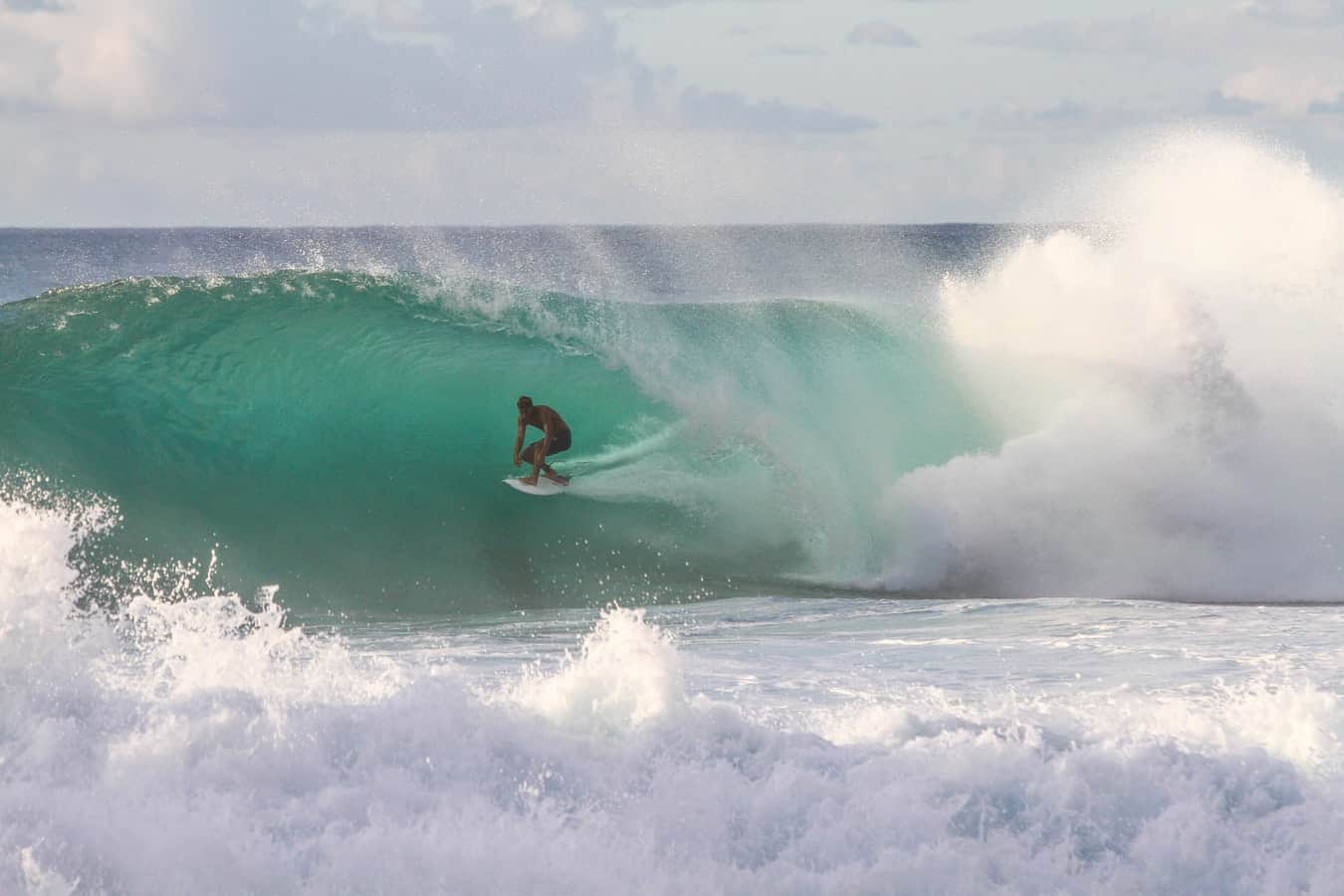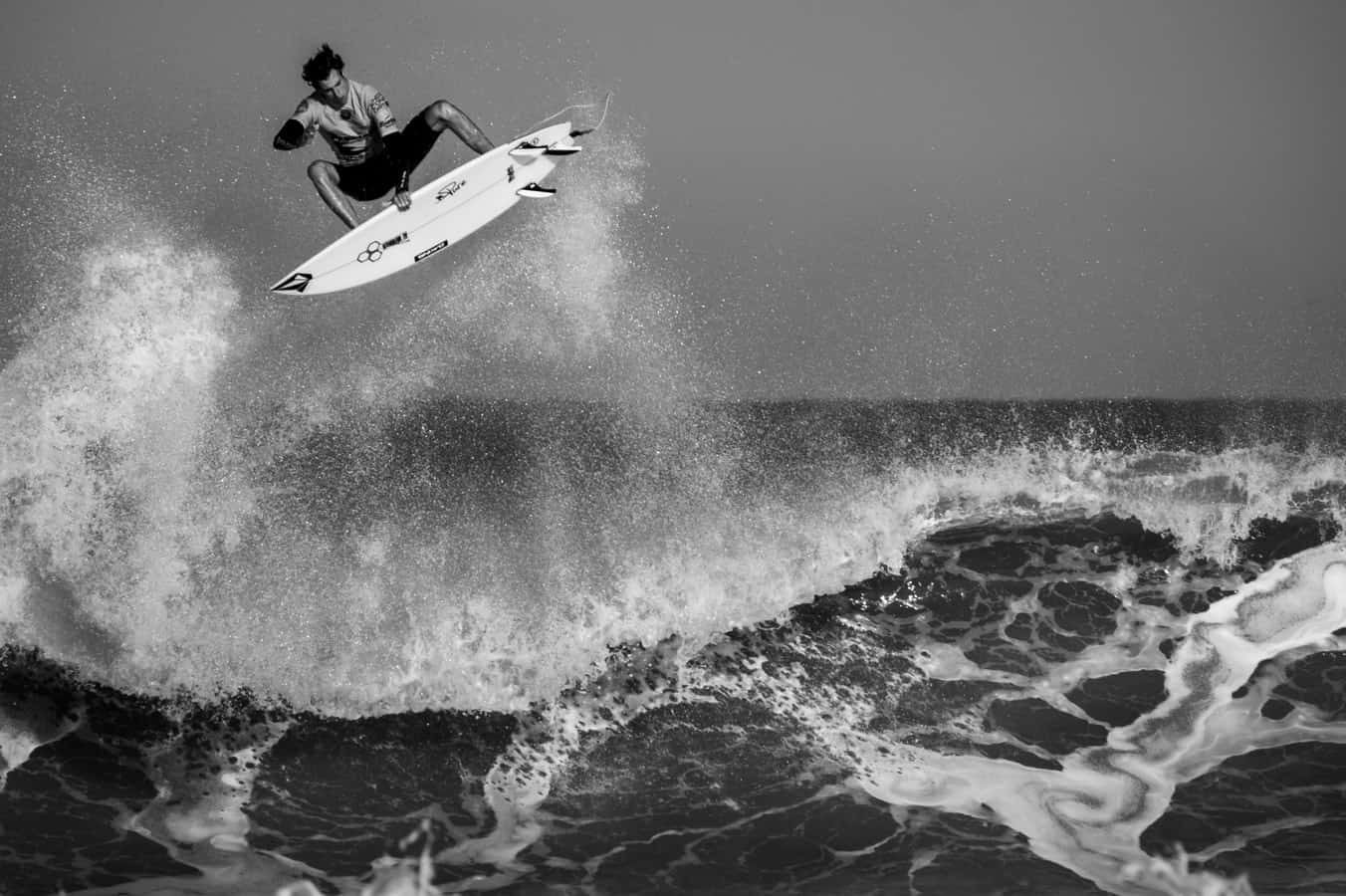Being a pro surfer is in many ways, the dream. We all love surfing but getting paid to catch waves? That’s heaven. Pro surfers are not only exceptional at winning competitions but also for being idolized as someone every surfer wants to be.
So many much do pro surfers make exactly? Pro Surfers earn between $250,000-$400,000 a year. To understand where this number comes from, you need to understand how the competitions and the world of sponsorship that comes with being one of the biggest names in surfing.
What Is A Surf Competition And Why Do They Matter?
The majority of the richest 20-30 pro surfers made a name of themselves by winning multiple competitions. Competitions take place in legendary surf locations like Huntington Beach or Teahupoʻo. Major corporations back the competitions, provide cash prizes and give surfers enormous amounts of exposure.
How Do Surfing Competitions Work?
If you’ve ever surfed, or even know of surfing ,you’re probably wondering how such a sport could possible be scored. And it’s not a bad question! Basically, a panel of five judges scores each wave on a scale of one to ten. For every scoring ride, the highest and lowest scores are discounted and the surfer receives the average of the remaining three scores. How the cash is divvied up amongst the top performers depends on the competition.
How Much Do Surfers Make From Competitions?
To answer this question, let’s first look at the major surfing events. The Vans US Open of Surfing for instance, is the biggest surfing competition in the world. As the name suggests, it’s sponsored by the mega-company Vans but only has a first place cash prize in the $30,000-$50,000 range. So you might be thinking, if the average surfer earns between $250,000-$400,000 a year, how many competitions are they winning? The truth is you don’t have to win a large amount of competitions per year to be in the upper echelon of pro surfers. In surfing, how brands view you matters just as much if not more than the competitions you win.

How Much Do Competition Runner Ups Make?
So if you don’t win the whole competition, how much do you make? The cash prizes one can win tend to fall off a cliff after the top five contestants. For instance, in the 2019 Vans US Open of Surfing Yago Dora won $30,000 and the runner up Liam O’Brien won $15,000. It then drops to $10,000 for third. From there, 5th- 8th win $5000, 9th-16th win $3550, 17th-24th win $2500 and from there it goes down slowly from $1800 to $500. Numbers like this explain why so many surfers tend to rely more on sponsorship deals from brands to reach the top of the pro surfer earnings list.
How Do Surfing Sponsorships Work?
Besides competition earnings, pro surfers make money by signing contracts with various companies to represent their brands. This practice is called sponsorship and unlike a company sponsoring an entire contest, it sponsors individual surfers who have distinguished themselves as among the best. The sponsor then pays him or her to bring publicity to the company. The best surfers get to travel to exotic locations and surf as lone as they bring back a plethora of video footage and stills that can be used to generate buzzworthy content. Some surfers have even have chosen to cut out the middleman of the pro tour by utilizing the online social media tools and publishing content on their own.
Just How Much Do The Top Surfers Make?
There was a time where Kelly Slater was the only surfer who earned a million a year on sponsorship alone. This is due to sponsorships Kelly Slater has had with major companies, most notably, a 23 year sponsorship with Quiksilver. Though Kelly Slater’s net worth as a surfer was once an anomaly; that simply isn’t the case anymore. For instance, 27 year old John John John Florence makes more than a million a year on a combination of endorsements and prize money. John John recently signed the biggest contract is pro surfing history with the Nike-backed company Hurley, inking an eight year 30+ million dollar deal. He also has deals with Stance, Futures, Nixon and Pyzel Surfboards. While John John Florence and Kelly Slater are at the very summit of the richest pro surfer list, the remainder of richest surfers made the vast majority of their money almost exclusively through similar partnerships with major brands.
What Makes A Surfer Worthy of Sponsorship?
Besides the name they’ve made for themselves in the competitions, there are many things pro-surfers to do to make them worthy sponsorship partners. It seems odd for a sport like surfing, but just like any sport, being a professional surfer means you have to possess the talent to make yourself marketable. You have to become a figure of influence. The surfer others would kill to be. The one they want to emulate. You can’t just do tricks the world has seen before. You have to discover your own unique personal style and push it to the absolute limit if you want a major company to notice you.
Do Male And Female Surfers Earn The Same Amount?
Without a doubt, the biggest payday in competitive surfing comes from winning a men’s Championship Tour. The Men’s Championship Tour (CT) is the men’s elite competition consisting of the best 34 professional surfers competing in 11 events, where the winner can earn up to $100,000 in cash prizes. By comparison, the winner of a women’s Championship Tour event used to make only $65,000 for their efforts. This is quite the considerable gap, even in an era where female professionals make 77 cents for every dollar a man makes on average. However, the World Surf League does subscribe to a purse parity or prize money parity system in which the total of prize money must be divvied up between finalists. Though this concept is actually progressive as far as sport tournament winnings go, the difference between the men’s winnings and their female counterparts is questionable to say the very least.
The total prize purses for men and women on the Championship Tour come down to ensuring the same value per surfer. According to the World Surf League rulebook, every Men’s Championship Tour has a total prize purse of $607,816 divided among 36 surfers. The women’s tour has exactly half the number of surfers among which to divide the prize money, so that number is split in half: $303,908. According to the Daily Telegraph, female pro surfers have a say in how prize money is allocated and have chosen to spread it in a more even way than their male counterparts by a significant margin. For instance, the difference in prize winnings between 1st and 13th for a Women’s Championship Tour competition equates to $55,000. The difference between 1st and 13th on the men’s tour, however, is a difference of $88,500 in prize money.
However, The World Surf League is making significant changes to shorten the wage gap between male and female pro surfers. Last year, they announced that it would adjust its prize money for 2019 so that each pool of professional surfers earns winnings from the same size pot. This was demonstrated by the 2019 Vans US Open of Surfing, where both male and female first place winners won $30,000.
Is Becoming A Pro Surfer Realistic?
So if you’re reading this, chances are you’ve had dreams about going pro at least once. Hell, maybe you’re even making your plan of attack for how to reach stardom as we speak. But before you put all your eggs in a sick barrel, consider this.
There are millions upon millions of surfers are out there, and only a couple dozen of them are making real money. The reality is this: mid-level surfers are not coming out of competitions with much money at all. In fact, after they factor in travel and related expenses, many surfers end their season owing money.
Most pro surfers piece their incomes together from several sources. First, competing in contests can result in solid prize money. As I mentioned before, the average total prize money for a first place win at a professional surf contest is usually around $40,000. The payouts decline precipitously the further down the ladder you finish. Another source of revenue for pro surfers is through sponsorships. Usually, top-tier surfers sign multi-year contracts upwards of a million dollars but even then the actual payment they see often depends on a surfer’s professional ranking.
In addition to sponsorships, pro surfers can endorse surfboard models and signature lines of shoes or clothes, an opportunity reserved for only the top ranking most famous pro suffers. For instance, pro surfer Dane Reynolds released a Dumpster Diver surfboard model, which made up a significant share of 2010’s total surfboard sales, so he was able to make a significant amount of money totally outside of the competitive scene.
So, the top of the professional surfers make upwards of $500,000, but that is 100% reliant upon competition results, travel expenses, product, and endorsements. There’s also little insurance for this lifestyle, one injury could throw you into financial free fall, cutting the already small window of a career as a professional surfer even shorter. So in summation, it seems that unless you are an absolute anomaly of a surfer, the idea of making enough cash to live out your days comfortably on surf money is an absolute toss up.
There are certainly surfers out there who are living the dream we all fantasize about. Surfers who get paid enough to fund trips to experience the world’s greatest waves and having their photos featured in magazines. The reality is the odds of this happening is rare and the majority of surfers trying to enter the pro scene are pinching pennies, sleeping on couches, and hoping their next injury isn’t too bad.
It’s also worth mentioning that if you make it to the top, it’s not all sunshine and roses. Sponsorships and winnings can earn top surfers a million dollars or more a year but they also pay hefty expenses to travel around the world to compete. The cost for equipment and entrance fees and dues stack up quick. Sponsors supply equipment for the very top of the list, but others have to pay out of pocket. For instance, Surfer Dayyan Neve told Stab magazine that he had no sponsor in 2007 and spent $100,000 of his own money paying his way to competitions. He won only $70,000 and ended up in debt. However the goal of this isn’t to discourage you, it’s to inform you about the treacherous road ahead. If the pro life is what you seek, you must earn your spoils.

